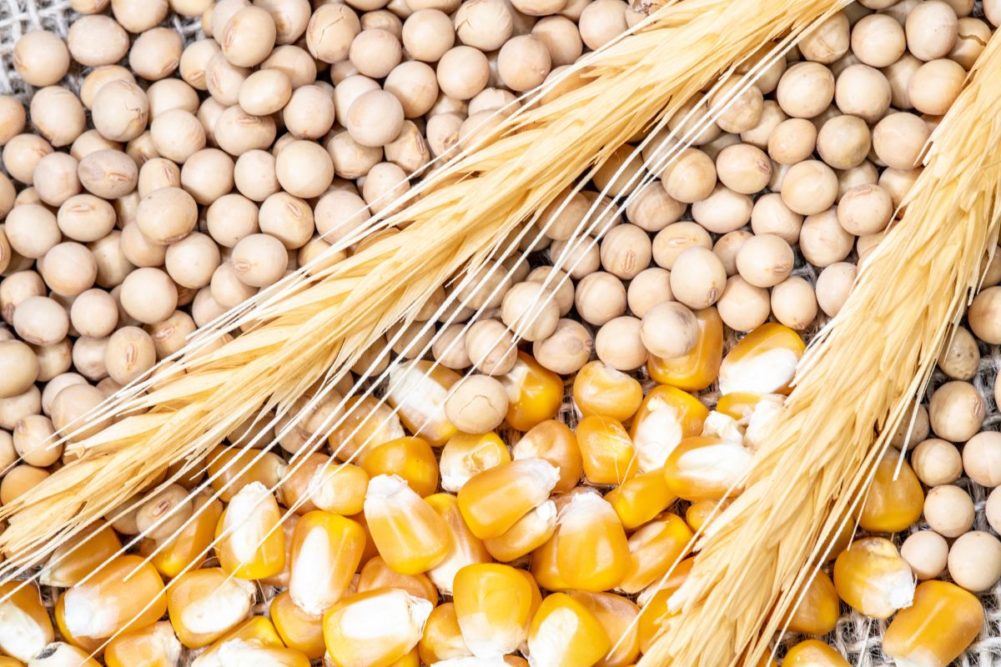CHESTERFIELD, MISSOURI, US — US corn and soybean exports will grow compared to previous years, while US wheat exports are not projected to increase, according to Rabobank’s annual 10-year outlook report on US grains and oilseeds released on May 15.
The report, “Balancing act: Rising yields, export challenges, structural changes” from RaboResearch, offers insights into potential long-term trends for the major US grains and oilseeds using a 10-year baseline through 2033-34.
Trends presented in the outlook are not a forecast but represent potential market trends in the context of certain market conditions. The report also analyzes a pair of scenarios that could affect the outlook: impact of declining corn exports on US acreage and impact of lower corn yield growth on US exports and acreage.
With continuing production growth, US exports will be crucial to balancing supply and demand, the report noted. However, in the long run, competition from Brazil, Argentina, Ukraine and Russia is likely to pose a challenge to US grain and oilseed exports.
Rabobank views US planted acres continuing a downward trend, with combined corn and soybean acres staying below the 180-million-acre mark. All three crops will remain below 230 million acres, as lower prices and compressed margins discourage acreage expansion.
In the near term, uncertainty for US farmers revolves around the continued growth of exports, which heavily influence domestic grain prices. While marketing year 2024-25 exports for corn, soybeans and wheat are seen rising compared to the previous year, competition remains fierce from Brazil.
“This is particularly true for soybeans, as Brazilian soybean prices will remain competitive in the global market,” Rabobank said. “Our view is that US corn will remain competitive in the global market as US corn production increases, exerting downward pressure on prices. Meanwhile, US wheat exports will encounter challenges due to strong competition from Russia and Ukraine, both of which offer competitive international prices.”
Longer term trends favor expansion of US export volumes, though they are unlikely to surpass the record set in 2020-21. While the United States long has been seen as a reliable supplier of grains and oilseeds, increased supplies are emerging from regions at more competitive prices with comparatively faster shipments and lower transportation costs. This has caused US global market share to shrink from about 50% in the 1990s to about 22% in 2024.
“We expect US market share to remain flat or decrease further as major exporters continue to expand production and gain market share,” Rabobank said. “However, weather conditions will play a crucial role in determining export availability for all major competing export countries, which will offer pockets of opportunities for US exports.”
Over the next 10 years, the report sees US exports of corn, soybeans and wheat increasing by an average of about 440 million bushels, about 9% higher than the average export volume of the past 10 years. Corn exports, buoyed by high production and lower prices, are expected to remain competitive on the global market. US soybeans will be split between increasing domestic crush and exports. However, Brazil will remain the primary origin for global soybean importers taking advantage of the South American country’s record production.
“Wheat will have to find a more strategic angle to remain relevant for US farmers,” Rabobank said. “Increased export competition from abroad, slow growth in domestic food consumption (in line with population growth), and the resulting decline in domestic acres all post challenges for the future of US wheat acreage.”
Abundant domestic and global stocks will settle acreage into a longer-term equilibrium. Corn area is seen easing to a more normal level of 90 million to 91 million acres, while soybeans will move close to 87 million to 88 million acres on the strength of domestic crush capacity. Combined, corn and soybeans will remain at a traditional 180 million acres. Competition from Russia and little growth in the US domestic market are expected to challenge wheat planted area, reverting to levels observed over the past 10 years between 45 million and 46 million acres.
Despite growing at a slower pace than exports, US domestic base demand continues to stabilize the market, Rabobank noted, driven by larger crush capacity, the recovery of ethanol demand, and increased feed use.
“The baseline lays out a period of lower prices over the next 10 years, with planted acres gradually decreasing, production growing and stocks increasing,” Rabobank said. “While these lower prices may not be favorable to farmer margins, they position the US more competitively in export markets. Maintaining and increasing US exports will be challenging. Equally important is keeping prices above the 10-year average, maintaining planted acreage levels and avoiding the depressed process experienced between 2014 and 2020.”




